|
|
The Cunarders |
|
|
The Cunarders |
| Cunard is not the oldest active maritime company, as in 1835 the 206 tons steamer called William Fawcett, inaugurates an irregular service of 'Peninsular Steam' to Spain and Portugal. On the other hand, she is the most mythical, as a name was created around her name: a Cunarder is a vessel from the Cunard. |
 P&O booklet On the front cover: William Fawcett |
|
Samuel Cunard submits on 11 February 1839 his offer for maritime transatlantic mail. |
| In November 1850, Cunard opens a steamer packet service from New York to St. Thomas, with call at Bermuda in both ways. The service is not a commercial success and is suspended in May 1854, and the service Halifax-Bermudes extended in place. |
| CURLEW is a a barkentine-rigged screw steamer (179x24x14) built by Denny's Shipyard, Dumbarton on the Clyde, purchased by the Cunard Line in July 1853. She inaugurated the Halifax-Bermuda-St. Thomas service in July 1854. During the next 20 months, she made 15 trips every four weeks to St. Thomas. On March 18, 1856, arriving from Halifax, she ran on the Bermuda reef and broke in two. The only lives lost were a few head of cattle. | |
|
|
 |
|
DELTA 1853 Built at Liverpool, England; Barclay Curle & Co., Glasgow,
England (Gt. 645, 205' x 29'2" x 15'9"), beam-geared 2 cyl engine,
single screw 120nhp, 9 knots. |
|
|
In spite of South Carolina secession resolution on 9 January 1861,
business goes on. SCOTIA is the largest and fastest paddler afloat (except GREAT EASTERN) This was Cunard's last paddle steamer on the North Atlantic. |
|
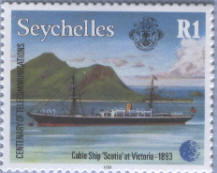 |
|
|
Cunard is no more alone and several competitors are installed ; among them Thomas Ismay's White Star appears in 1871. |
|
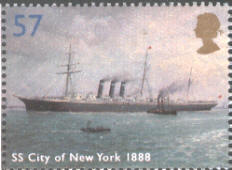 |
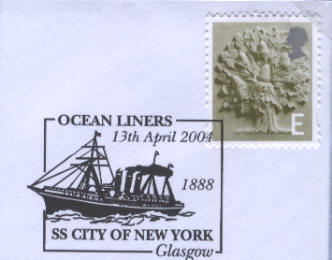 |
|
The contract to built the
CAMPANIA was signed in August 1891. Her maiden voyage was Liverpool-New York April 22, 1893. At that time, she was the largest and fastest ship
afloat: Gt. 12,950; 620' overall x 65'2" x 37'8"; 2 funnels, 2 masts; 2 sets 5cyl triple-expansion engines' 2 screws 21kn; 600 1st class, 400 2nd class, 1,000 3rd class passengers; Crew 400. |
|
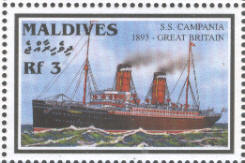 |
|
|
CARPATHIA is designed by Swan & Hunter, Wallsend-on-Tyne,
England primarily designed for the Hungarian emigrant service between Fiume and New York and made its maiden voyage from Liverpool to New York, via Queenstown on May 5, 1903. .The accommodation was far superior to anything previously offered to emigrants and the third class accommodation was of a good standard. The ship continued the Liverpool to New York service until November 1903 and then spent the winter carrying passengers from Trieste and Fiume. |
|
|
|
|
|
Built by John Brown & Co., Clydebank, CARMANIA -Gt. 19524, nt. 9982; 650.4'pp x 72.2' x 33'3" draft; 3 turbines, 3 screws 20 knots
- sailed on her maiden voyage from Liverpool on Dec. 2, 1905 for New York. At the outbreak of the First World War, she was requisitioned by the British Admiralty and converted to an armed cruiser. |
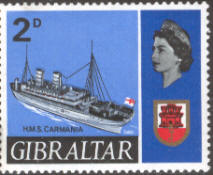 |
|
Turbines are now the standard for all passenger ships in Cunard. |
|
|
|
|
1907 saw the arrival of two giants : LUSITANIA, 31500 tons, delivered by John Brown, takes the Atlantic record on her second voyage with an average speed of 24
knots. MAURETANIA, delivered from the Tyne by Swan, Hunter & Wigham Richardson, beats LUSITANIA by 21 minutes, on her homeward run. MAURETANIA is the fastest vessel until the advent of BREMEN in 1929. |
|
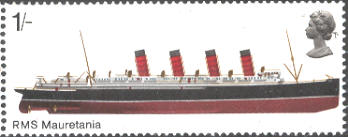 |
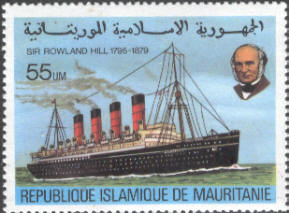 |
|
Although the propulsion machinery was identical to that of the Lusitania two modifications gave the Mauretania a slight edge over its sister. The diameter of the propeller blades was slightly larger and the turbines were fitted with more rows of blades. Requisitioned, the Mauretania avoids the torpedo of a submarine largely due her high speed. At the end of August it returned to Liverpool and was fitted out as a hospital ship. On 21 September 1919 it sailed from Southampton on its first commercial voyage since World War One began The Mauretania made its final passenger sailing from Southampton on 30 June 1934, the day Cunard and White Star Lines merged. After two cruises to the West Indies it returned to Southampton on 2 October. |
|
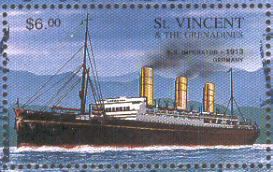 |
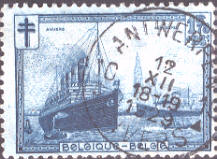 |
|
At the time when Hamburg America line and White Star introduce their super giants Imperator (52 000 tons) and Olympic (46 200 tons), Cunard replied with
AQUITANIA, going on her maiden voyage on 31 May 1914. |
|
 |
|
|
In December 1930, works on hull 534 start at John Brown yards on the Clyde river then stopped in 1931 because of difficulties eéconomic. Two years later, the British governement gives a loan of £ 3,000,000 with the condition of the merging with the White Star effective on 30 décembre 1931. The White Star contributes 8 ships among them OLYMPIC, and on 26 septembre 1934, QUEEN MARY is launched. On 27 May 1936, the blue riband is taken to Normandie (see Liners made in France) at 30.14 knots then in 1938 31.69 knots are reached. |
|
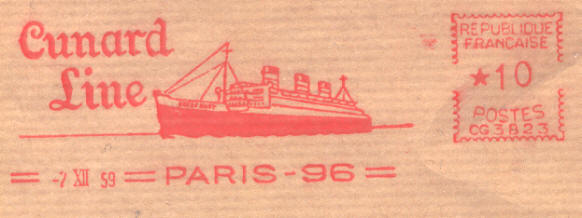 |
|
|
In juillet 1938, a new MAURETANIA is launched at Birkenhead. from the 3 décembre 1939, she is gray painted and proceeds to 48 troops transportation before handed back to owners for Southampton-Cherbourg to New York service in 1947. |
|
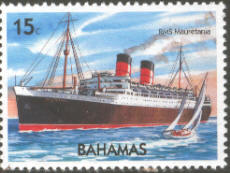 |
 Postcard with mark of Le Havre |
|
The fleet modernisation goes on with QUEEN ELIZABETH which joins in secret QUEEN MARY at New York: the both ships carried more than 1.2 millions of soldiers in 6 years.
|
|
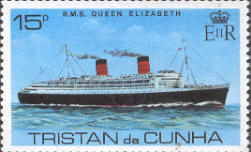 |
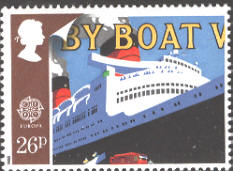 |
To followed: the Cunarders on cruise
|
Click below for the pages list |
|
|
Page on line on:
|